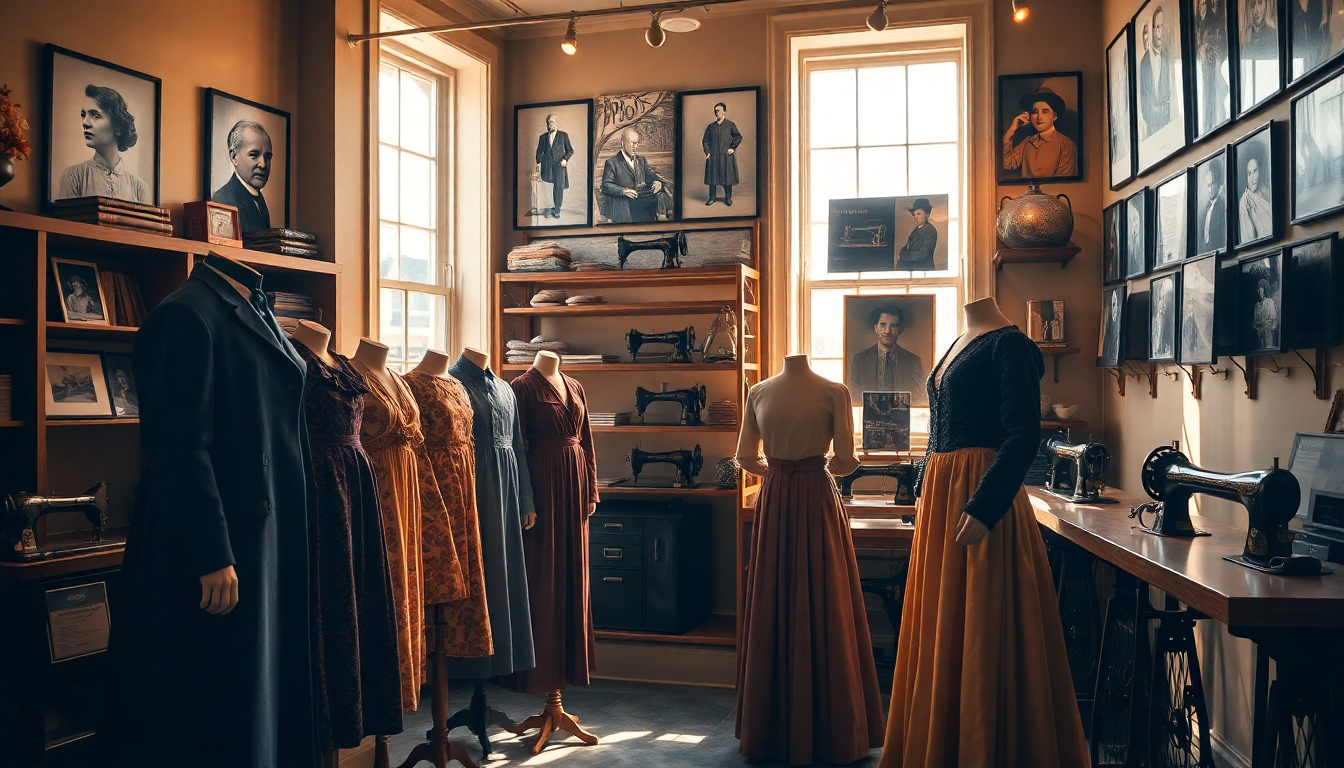Table of Contents
Once a bustling hub of activity in Montreal’s garment industry, the H. Fisher & Fils store has now reinvented itself as a pop-up museum. This unique transformation celebrates the profound impact that the garment sector has had on the local community, especially its rich Jewish heritage. Nestled on St-Laurent Boulevard in the vibrant Plateau neighborhood, the store operated under the care of Esther Fisher, the widow of the original owner’s son, until 2022. Now, this museum not only preserves the memories of a bygone era but also highlights the pivotal role the garment industry played in shaping Montreal’s cultural landscape.
Why H. Fisher & Fils Matters
Opened in 1922, H. Fisher & Fils quickly became a beloved fixture in a neighborhood renowned for its garment businesses, many of which were started by Jewish immigrants from Eastern Europe. As the area evolved and many shops relocated, H. Fisher & Fils remained a beacon of resilience, supplying sewing essentials to everyone from Cirque du Soleil to various fashion schools. Its modest storefront, where the Fisher family also lived, became a heart of creativity, embodying the industrious spirit of its community. Isn’t it fascinating how a single store can encapsulate so much history?
The recent transformation into a pop-up museum keeps much of the store’s original charm. Vintage sewing machines, old cash registers, and newspaper clippings decorate the walls, providing visitors with a tangible connection to the past. This museum invites guests to explore the very tools that fueled the creativity of local artisans, turning it into a dynamic learning experience. Don’t you love when history comes alive like that?
Experience History Like Never Before
Designed with interaction in mind, the museum features rolls of fabric towering from floor to ceiling and shelves overflowing with zippers, buttons, and essential notions. One standout display includes a video interview with Esther Fisher herself, offering personal insights into her journey of taking over the family business and the challenges she faced. This focus on personal stories makes history not just informative, but relatable.
As you wander through the museum, you’re not just a passive observer; you’re encouraged to touch and feel the various materials. This hands-on experience fosters a deeper understanding of the historical context, setting it apart from traditional museum displays. Austin Henderson, the museum’s arts programming and communications manager, emphasizes how this tactile engagement allows visitors to connect with history in a way that truly resonates. Have you ever thought about how our senses can deepen our understanding of the past?
Understanding the Bigger Picture
The legacy of H. Fisher & Fils is intricately woven into the larger narrative of Montreal’s garment industry, especially its significance to the Jewish immigrant community. The term ‘shmata industry’—a Yiddish word meaning rag or cloth—perfectly encapsulates this sector, which offered crucial employment opportunities to those fleeing turmoil in Eastern Europe. Taryn Fleischmann, the cultural programming and exhibitions coordinator for the Museum of Jewish Montreal, highlights that the garment industry provided vital economic stability and social mobility for many immigrants in the early 20th century.
Throughout the 19th and 20th centuries, St-Laurent Boulevard bustled with successive waves of immigrants establishing businesses that contributed to the rich cultural tapestry of Montreal. Yet, as the industry shifted and the area transitioned into a hotspot for trendy restaurants and boutiques, the historical significance of establishments like H. Fisher & Fils becomes even more apparent. It stands as a poignant reminder of a vibrant chapter in the city’s history filled with hard work and creativity. Isn’t it incredible how these stories shape our understanding of community?
Keeping the Legacy Alive
As the museum continues to evolve, there are exciting plans to introduce more exhibits that will tell the personal stories of individuals connected to the Fisher family. This ongoing narrative ensures that the rich history of Montreal’s garment industry, along with its impact on the community, will be preserved for future generations. Personal artifacts, like a coffee mug filled with tools left behind by customers, serve as touching reminders of the everyday lives that once brought the store to life.
In conclusion, H. Fisher & Fils has transcended its original purpose, emerging as a beacon of history and cultural heritage. By engaging with the past in such a meaningful way, the museum not only honors the legacy of the garment industry but also cultivates a greater appreciation for the stories that shape our communities today. This endeavor is crucial for nurturing a sense of identity and continuity in an ever-changing urban landscape. How important do you think it is to preserve these stories for the future?


